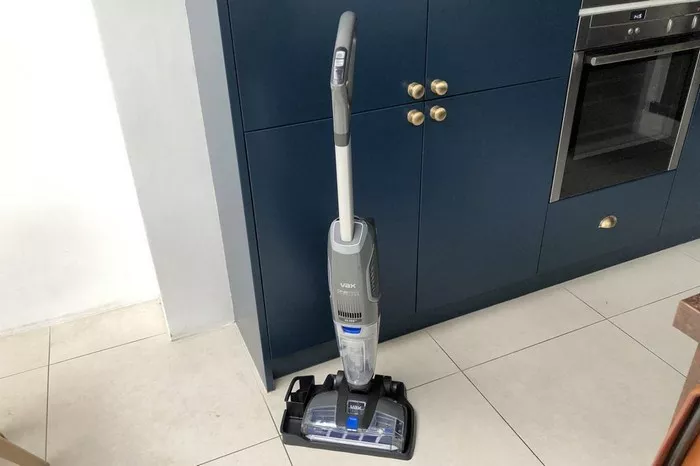Tennant floor scrubbers are powerful machines designed to clean a variety of floor types efficiently. They are ideal for commercial and industrial settings where cleanliness is a priority. Understanding how to use tennant floor scrubber properly can help maintain floors effectively while maximizing the scrubber’s lifespan.
Understanding the Tennant Floor Scrubber
What is a Tennant Floor Scrubber?
Tennant floor scrubbers are automated machines used to clean hard surfaces. They use water, detergent, and scrubbing brushes to remove dirt and grime. They are available in different models, including walk-behind and ride-on options.
Benefits of Using a Tennant Floor Scrubber
Using a Tennant floor scrubber offers several advantages, including:
- Improved cleaning efficiency
- Reduced labor costs
- Enhanced floor appearance
- Decreased drying time for floors
Preparing to Use the Floor Scrubber
Read the Manual
Before operating the scrubber, it is essential to read the user manual. The manual provides detailed instructions specific to your model. Familiarize yourself with all controls and features.
Gather Necessary Supplies
You will need the following supplies before starting:
- Cleaning solution compatible with the floor type
- Clean water
- Personal protective equipment (PPE) such as gloves and goggles
- Clean rags for touch-ups
Setting Up the Tennant Floor Scrubber
Inspect the Machine
Before using the scrubber, perform a thorough inspection. Check for:
- Properly functioning brushes
- Clean tanks for water and detergent
- No visible damage to the machine
- Adequate battery charge (if applicable)
Fill the Solution Tank
Open the solution tank and fill it with the appropriate cleaning solution. Dilute the solution according to the manufacturer’s instructions. Then, add clean water until the tank is full. Make sure the lid is securely closed.
Prepare the Recovery Tank
Check the recovery tank for any leftover water or debris from previous uses. Empty and clean the tank if necessary. This ensures that the machine operates efficiently and prevents odors.
Operating the Tennant Floor Scrubber
Powering On the Machine
Locate the power switch and turn the machine on. Most models will display an indicator light when powered. Allow the scrubber to complete its self-check if applicable.
Adjusting the Brush Pressure
Depending on the floor type, you may need to adjust the brush pressure. For softer surfaces, reduce the pressure to avoid damage. For tougher surfaces, increase the pressure for effective scrubbing.
Starting the Scrubbing Process
Choose the Cleaning Mode: Most Tennant scrubbers have different modes for various tasks. Select the mode that suits your cleaning needs.
Move the Scrubber into Position: Position the scrubber at the starting point of the cleaning area.
Engage the Brushes: Activate the brush function. This typically involves pressing a button or flipping a switch.
Dispense Cleaning Solution: Start dispensing the cleaning solution. Many models allow you to control the flow rate.
Operating the Machine
Drive the Scrubber: Move forward at a steady pace. Avoid rushing to ensure thorough cleaning.
Make Turns Carefully: When turning, lift the brushes slightly to avoid damage and to maintain the cleaning pattern.
Monitor the Cleaning Path: Ensure you cover the entire area without missing spots. Overlap slightly on passes for uniform cleaning.
After Using the Floor Scrubber
Empty the Recovery Tank
After completing the cleaning process, turn off the scrubber and empty the recovery tank. Dispose of the wastewater according to local regulations.
Clean the Brushes
Remove any debris from the brushes. This prevents damage and extends the life of the brushes. Check for wear and replace if necessary.
Rinse the Solution Tank
Rinse the solution tank with clean water to remove any remaining cleaning solution. This prevents buildup and odors.
Inspect the Machine Again
Conduct a final inspection of the machine. Check for any signs of wear or damage that may need addressing before the next use.
Regular Maintenance Tips
Scheduled Maintenance
Regular maintenance is crucial for the longevity of the Tennant scrubber. Follow a schedule for tasks such as:
- Cleaning or replacing brushes
- Checking battery health
- Inspecting hoses and connections
Daily Cleaning
After each use, wipe down the exterior of the scrubber. This helps maintain a clean appearance and prevents grime buildup.
Professional Servicing
Consider having the machine serviced by a professional periodically. They can conduct in-depth inspections and repairs, ensuring optimal performance.
see also: When Should a Floor Scrubber Be Used?
Troubleshooting Common Issues
Machine Won’t Start
If the scrubber does not power on, check the power supply. Ensure it is plugged in or that the battery is charged.
Insufficient Cleaning
If the machine isn’t cleaning effectively, check the brushes for wear. Also, ensure that the cleaning solution is being dispensed correctly.
Excessive Noise
Unusual noises may indicate a mechanical issue. Stop using the scrubber and inspect it for any loose parts or obstructions.
Conclusion
Using a Tennant floor scrubber is an efficient way to maintain clean floors in various settings. Proper preparation, operation, and maintenance are essential for optimal performance. By following these guidelines, you can ensure that your floor scrubber serves you well for many years, contributing to a cleaner and healthier environment. Always refer to the user manual for specific instructions related to your model, and never hesitate to seek professional help if needed.
Related topics:

